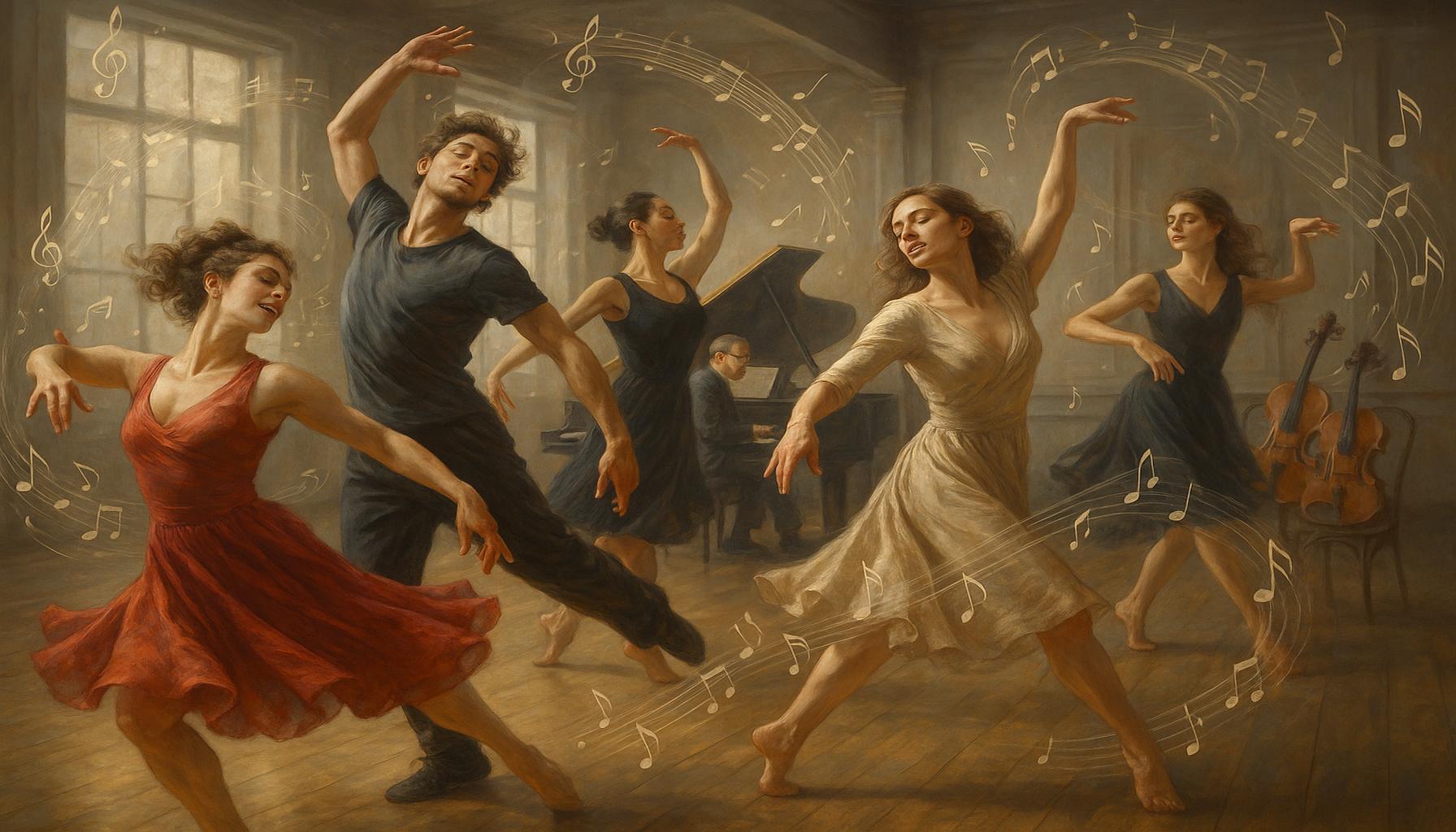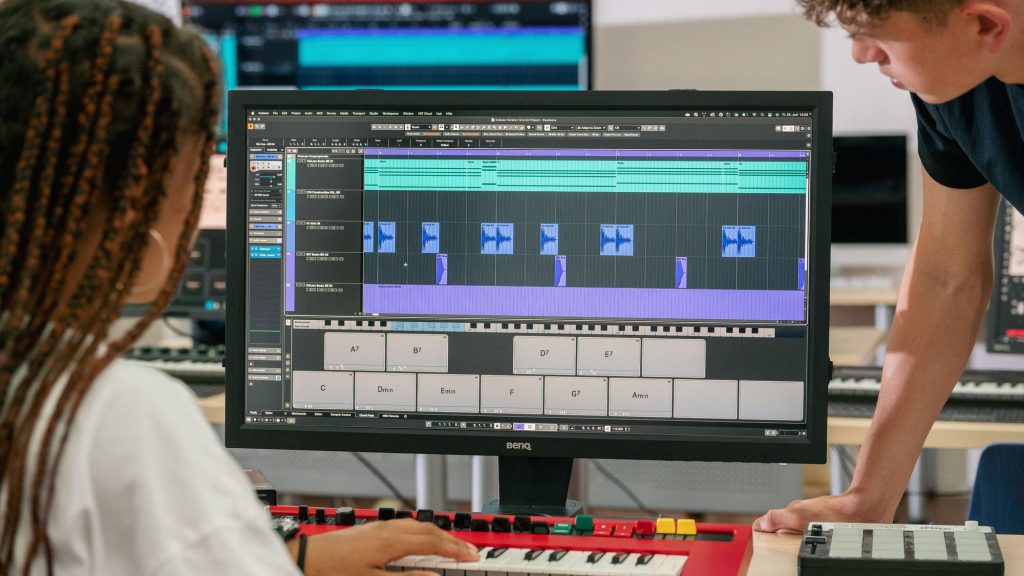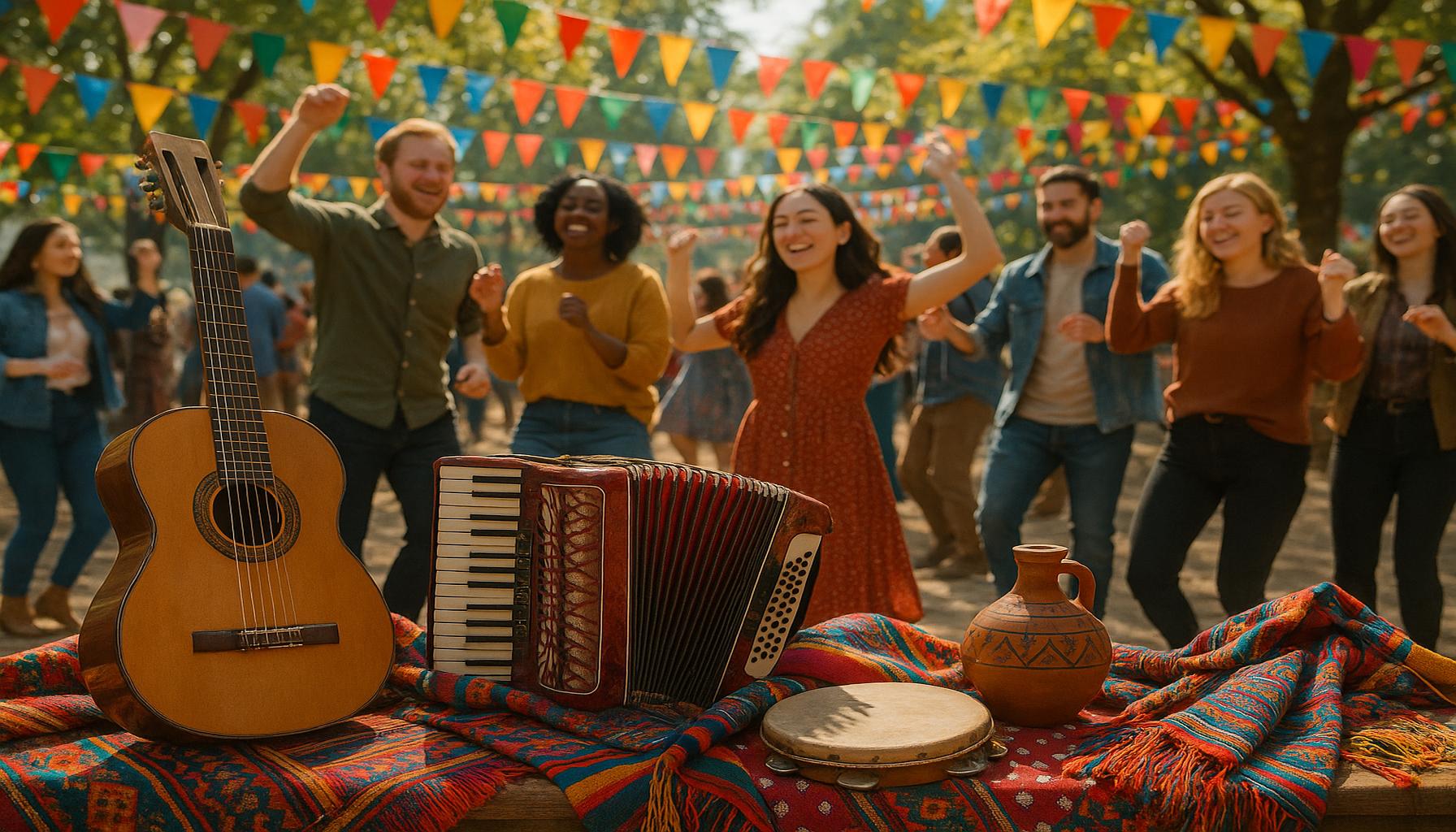Music and Technology: The Impact of Digital Tools on Contemporary Music Composition and Production

Redefining Creation and Distribution in Music
The integration of technology into the realm of music has reshaped how art is created, produced, and consumed. Digital tools have revolutionized the music industry, making it more accessible to emerging artists and reshaping the landscape for seasoned musicians. This technological shift has fostered an ecosystem where creativity flourishes, unhindered by traditional constraints.
Advanced Digital Audio Workstations (DAWs)
At the heart of this transformation are advanced DAWs (Digital Audio Workstations). Software such as Ableton Live and Logic Pro have enabled artists to produce music at a professional level right from their bedrooms. These platforms come loaded with features like multi-track recording, MIDI support, and an array of built-in sounds and effects. For instance, Ableton Live is particularly favored for its performance capabilities, making it a top choice for electronic musicians and DJs wanting to experiment with live setups.
The Power of VST Plugins
Another significant aspect of this digital revolution is the rise of VST (Virtual Studio Technology) plugins. These virtual instruments and effects provide an almost limitless palette of sounds, including everything from orchestral strings to cutting-edge synths. For example, plugins like Native Instruments’ Kontakt allow users to simulate realistic instrument sounds, while Xfer Serum is prized for its powerful sound design capabilities. The accessibility of these tools means that novice producers can craft professional-sounding tracks without the need for expensive equipment.
Global Collaboration Tools
The rise of collaboration platforms has also changed the way musicians work together. Tools such as Splice allow creators from different corners of the world to collaborate seamlessly in real-time. This has led to musical fusions that draw on diverse cultural influences, enriching the soundscapes of contemporary music. Imagine an artist in Los Angeles working with a producer in Tokyo, blending genres and styles in ways that were once logistically impossible.
Streaming Services and Artist Outreach
Furthermore, the advent of streaming services like Spotify and Apple Music has revolutionized music distribution. Artists can now share their work with audiences globally without the need for a major label’s backing. This shift has also altered how artists are compensated, leading to discussions about fair pay and the future of music monetization. An independent artist can now upload their music to these platforms, potentially reaching millions of listeners, which was inconceivable in the pre-digital era.

These innovations not only streamline the composition process but have also democratized production. Musicians, regardless of their background or resources, are now able to produce high-quality music from their own homes. The barriers that once defined the music industry are eroding, giving rise to a new generation of independent artists.
This rapid evolution raises important questions about the nature of creativity and the role of technology in artistic expression. As we delve into this topic, we will uncover how these digital tools are not just changing the process of music production but also impacting the very essence of what it means to create music in the contemporary landscape. The dialogue surrounding technology and artistry is evolving; there is much to explore regarding how these tools can enhance or potentially dilute the purity of creative expression.
DISCOVER MORE: Click here for eco-friendly gardening tips!
The Revolution of Music Creation with Technology
The role of technology in music composition has evolved dramatically, allowing artists to break free from traditional confines and explore innovative soundscapes. With the advent of digital tools, today’s musicians have essentially become both creators and curators, wielding an array of advantages that reshape their artistic expressions. This democratization of music production has fundamentally altered the creative process, fostering a dynamic environment where experimentation is not only welcome but celebrated.
Revolutionizing Sound Design
One of the most profound impacts of technology on contemporary music is the ability to experiment with sound design. Synthesizers and sampling software have become instrumental in crafting unique sounds that can’t be replicated with traditional instruments. These tools allow musicians to manipulate sound waves, generating new timbres and textures. For example, synthesizers like Moog Sub 37 or software synths like Omnisphere enable artists to create everything from lush pads to gritty bass lines with unprecedented ease.
Access to Learning and Resources
The internet has opened vast avenues for education and resources in music production. Aspiring artists now have access to an abundance of online tutorials, webinars, and forums that cover everything from basic sound engineering to advanced mixing techniques. Some noteworthy platforms include:
- YouTube: A treasure trove of video tutorials covering every aspect of music production.
- Coursera: Offers courses from established institutions like Berklee College of Music on music production.
- SoundOnSound: A magazine that provides comprehensive articles and reviews focused on the latest technology in music.
This wealth of information empowers artists to develop their skills independently, encouraging a spirit of self-reliance and creativity that was less accessible before the digital revolution.
Automating the Creative Process
Technology has also introduced automation into the world of music production. Digital tools can now handle repetitive tasks such as editing and mixing, freeing up valuable time for musicians to focus more on the artistic side of creation. For instance, techniques such as quantization can correct timing discrepancies in recorded audio, while AI-driven algorithms can even suggest chord progressions or melodies that complement existing tracks.
The Evolution of Music Genres
The blending of genres is another exciting outcome of technology in contemporary music. By utilizing digital tools, artists can seamlessly merge elements from diverse styles, leading to innovative genres like lo-fi hip-hop, synthwave, and trap. Collaborative projects often showcase this blending of styles, reflecting the nuances of artists’ backgrounds while breaking down genre barriers. Notable examples include:
- Post Malone</: Fusing hip-hop with rock and pop influences.
- Billie Eilish: Melding pop with electronic and alternative sounds.
- Kacey Musgraves: Integrating country with pop and psychedelic influences.
This evolution continues to challenge our perceptions of what defines specific music genres, demonstrating how technology can inspire creativity and redefine musical norms.
The intersection of music and technology is an expansive domain, inviting musicians to push boundaries and explore uncharted territories in sound. As we further examine this topic, we’ll uncover more about how these digital tools not only streamline production but also reshape the very essence of creativity in the modern musical landscape.
| Category 1 | Category 2 |
|---|---|
| Digital Audio Workstations (DAWs) | Allow for comprehensive music production and editing, providing tools for arrangement, mixing, and effects. |
| Accessibility | Democratizes music creation, enabling individuals from diverse backgrounds and skill levels to compose and produce music. |
The integration of digital tools has transformed the landscape of music composition and production, with Digital Audio Workstations (DAWs) at the forefront of this revolution. These powerful software platforms not only enable musicians to record, edit, and arrange tracks but also provide extensive libraries of virtual instruments and effects. The availability of such tools means that artists can experiment and push creative boundaries from the comfort of their own homes, facilitating a new era of innovation in music creation.Furthermore, the rise of mobile applications and cloud-based solutions is augmenting this trend, allowing for collaborative efforts across distances. Musicians can work together on projects regardless of geographical barriers, leading to a rich amalgamation of styles and genres. The convenience and affordability of these technologies are altering traditional music production paradigms and paving the way for a more inclusive music creation environment.As technology continues to evolve, one can only expect new and exciting developments in how music is produced, composed, and experienced. This intersection of music and technology not only enhances creativity but also encourages a deeper exploration of sound.
DIVE DEEPER: Click here to uncover the mental health benefits of journaling
Shaping the Future of Music Collaboration
Collaboration has taken on a new dimension in the realm of contemporary music thanks to technology. Artists can now connect across the globe, working together remotely to co-create and produce music without the constraints of geographical boundaries. Platforms such as Splice and SoundBetter enable musicians to share files, collaborate on projects, and even hire session musicians and producers for their tracks. This access allows for a more diverse range of influences and styles to be integrated into a single piece of music.
The Rise of DAW Innovation
Central to modern music production is the Digital Audio Workstation (DAW), which has revolutionized how music is made. Programs such as Ableton Live, Logic Pro X, and FL Studio offer powerful features for composition, recording, and editing, enabling artists to craft intricate arrangements with relative ease. These DAWs have evolved to become user-friendly environments with customizable interfaces and an array of plugins that cater to every genre imaginable. This flexibility empowers creators, allowing them to translate their ideas into fully realized compositions.
Real-time Collaboration and Cloud Technology
Cloud-based technologies are also changing the way musicians collaborate. Tools like Google Drive and Soundtrap provide shared workspaces where artists can upload revisions and discuss changes in real time. This functionality enhances the collaborative experience, as musicians can participate in brainstorming sessions, comment on compositions, and make adjustments collectively, all without having to be in the same room. The agility of this process fosters innovation and spontaneity, enabling artists to keep pace with the rapid evolution of music trends.
The Democratization Through Distribution Platforms
The digital landscape has also transformed the way music is disseminated. Distribution platforms like SoundCloud, Bandcamp, and Spotify allow artists to release their work to the public with a few clicks, bypassing traditional gatekeepers such as record labels. This democratization of distribution has empowered independent musicians like Chance the Rapper and Tash Sultana to gain recognition primarily through their digital presence and grassroots marketing initiatives. Such platforms not only provide artists with immediate access to global audiences but also offer data analytics that help refine their marketing strategies.
The Role of Social Media in Music Promotion
Social media has become an integral tool for music promotion. Artists can leverage platforms like Instagram, Twitter, and TikTok to share snippets of their creative process, interact with fans, and promote their music. Viral trends often spark new challenges or dances that propel songs into the mainstream consciousness, illustrating the power of digital media in shaping not only how music is consumed but also its very production. As a result, artists must develop a digital persona that resonates with their audiences, often merging their music styles with visual storytelling.
These advancements highlight how technology continues to redefine not only the methods of music composition and production but also the frameworks through which artists collaborate and distribute their work. As we delve deeper into the evolving landscape of music and technology, we will uncover the latest innovations that are set to impact future generations of musicians, ensuring that creativity remains at the forefront of this dynamic field.
LEARN MORE: Click here to discover sustainable gardening tips
Conclusion: The New Frontier of Music
In this rapidly evolving digital age, the intersection of music and technology has fundamentally altered the landscape of music composition and production. The rise of Digital Audio Workstations (DAWs) equipped with innovative features has empowered artists with unprecedented tools for creativity, enabling them to craft sonic experiences that were once beyond reach. Furthermore, platforms that facilitate global collaboration and real-time communication have redefined what it means to create music, breaking down geographical barriers and inviting an eclectic range of influences into the artistic process.
The democratization of music distribution via platforms like SoundCloud, Bandcamp, and Spotify has leveled the playing field, allowing independent musicians to showcase their work directly to a global audience. This shift aligns with the growing importance of data analytics in shaping marketing strategies, providing artists with insights that were previously unavailable. As social media continues to play an integral role in music promotion, artists are challenged to cultivate their digital personas, further merging creativity with branding in a rapidly changing digital environment.
Ultimately, as we journey further into this new frontier of music and technology, it remains apparent that innovation will continue to drive the industry forward. As emerging tools and platforms evolve, they promise to inspire the next generation of musicians to explore new creative avenues, reinforce cultural connections, and shape the soundscape of the future. This transformative era beckons both seasoned professionals and aspiring artists alike to embrace the potential of technology, making it an exciting time to engage with the ever-expanding world of music.

